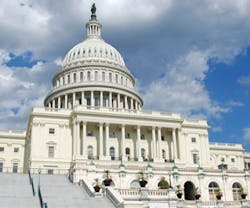Congress Hears ASHRAE President Testifies on Building Efficiency
The impact of U.S. buildings on the environment is surprisingly large, with CO2 emissions alone approximately equaling the combined emissions of Japan, France and the United Kingdom for transportation, industry and buildings.
The U.S. Federal government is the nation’s single largest energy consumer and greenhouse gas emitter, and in Congress’s efforts to seek ways of improving the energy efficiency of federal buildings, the U.S. House Subcommittee on Government Management, Organization and Procurement recently held a hearing to examine the federal government’s role in greening buildings.
ASHRAE President Lynn G. Bellenger, who testified at the hearing, highlighted several efforts and initiatives that ASHRAE is engaging to help lead to increased building efficiency, including their own:
- Advanced Energy Design Guides for achieving 30% savings over Standard 90.1-1999 followed by the forthcoming Guides for achieving 50% savings and net-zero-energy consumption.
- Certification programs for high-performance building design, building energy modeling, healthcare facility design, commissioning process and operations, and performance management professionals.
- Building Energy Quotient (Building EQ) labeling program that includes both As Designed (asset) and In Operation (operational) ratings for all building types, except residential. Building EQ determines how energy efficient a building is in operation compared to its design.
- Standard 189.1, Standard for the Design of High-Performance Green Buildings Except Low-Rise Residential – the first code-intended green building standard in the U.S. – also serves as a jurisdictional compliance option of the International Green Construction Code (IgCC), published by the International Code Council.
“Going forward, maximizing building efficiency and sustainability will require a fundamental shift in how buildings have been approached – from design to operation,” says Bellenger. “Working together toward a whole building approach that fully considers how each system and building component will interact – instead of each discipline focusing on their own area of expertise – will be an essential element of ensuring that taxpayer dollars are well-spent.”
